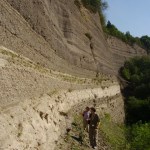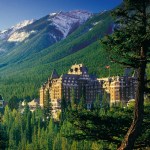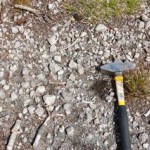Science Journalism
We've arrived at Friday. The local time is 8:45 A.M. Set your watches accordingly.
Batur, Indonesia
Some news!
More evacuations have been authorized near Mayon as the volcano continues to show signs of significant eruption. Activity has quieted some since Tuesday's explosion, but PHIVOLC still expresses concern that an eruption in impending within weeks. I'll also add a link to this story on Mayon, not because it has new news, but because it has quiet possibly the worst accompanying photo for this story I've seen so far. I mean, really, couldn't you have found some stock picture of Mayon…
Geologic and structural map showing the extent of the Campi Flegrei caldera on the north of the Bay of Naples, Italy. Image courtesy of INGV.
One of the writing assignments I always enjoyed in high school was the "compare and contrast". You could sit back and look for stylistic differences between writers and texts - potentially offering signs about the nature of the writers motivations.
I still find it fun - case in point, two article I read about the research drilling that is about to start at the Campei Flegrei in Italy. The Campei Flegrei is a large caldera system that most recently…
It seems like I've been stepping on a lot of people's toes lately, so in an effort to foster more camaraderie and less belligerence between the "old media" (this is not derogatory, but rather refers to anything pre-internet news source or classic journalistic source) and "new media" (this includes internet-era news sources, bloggers and the like), I'd like to put down my thoughts on the state of science journalism on the internet today.
I do not think all media is bad at science. There are a multitude of great science sources out there that handle the issues quite well, mostly associated…
In today's Washington Post, former editor Leonard Downie and communication scholar Michael Schudson preview the release of a major new study on the future of news. Below are some of the key recommendations of the report which reflect similar themes I have described in recent articles and at this blog specific to new models for science journalism. In particular, Downie and Schudson echo the need for government funding of new journalism ventures in areas such as science and health and the vital role at the local level that public media organizations and universities can and should play. […
News to finish up your week:
Summit area of Hualalai in Hawai'i
Another day, another "threat" of volcanic eruption in Australia. I'm impressed with the abject fear Aussies seem to have for this perceived increased threat of an eruption - or at least what the press wants you to believe. This time, watch out near Bundaberg, Townsville and Cooktown in southeast Queensland!
In more press-related exaggeration, the Siberian Traps - a flood basalt eruption from, well, thousands of rift/vents in Siberia - is boiled down to being one Siberian volcano by the Telegraph. Dr. Mark Sephton of the…
A bit of news for your last Monday in September:
Pumice deposits from the ~13,000 year old Laacher See eruption. Image by Erik Klemetti, taken in August 2007.
More press for Dr. Joyce and his campaign to make the people of Australia terrified that volcanoes will destroy them. He warns of "new volcanoes" springing up in the Ballarat region to the northwest of Melbourne (which, incidentally, is where I pointed out might be the most likely place for future volcanism). Yes, sure, we should expect that a new, unknown scoria cone may form in the Newer Volcanic Province - I mean, that is what…
The Atherton Tablelands in Far North Queensland, Australia.
Nothing makes me shudder like any article titled "Blankety-blank volcano is overdue". Typically the article that follows is full of nothing but vapid speculation and media fear-mongering. So, it wasn't too surprising that an article titled "Volcano eruption 'overdue'" in the Brisbane Times (amongst many other sites) didn't disappoint (or, in particular, it did). Dr. Bernie Joyce is quoted as saying "It is much more likely to be a matter of when, rather than if..." in regards to potential future volcanism on the Australian continent…
At Knight Science Tracker, Charlie Petit has the details on one of the first examples of non-profit, localized coverage of science, a trend I have argued is necessary and worthy of investment on the part of universities, foundations, and government agencies.
I am in Banff this week participating in a fascinating workshop on the scientific, clinical, ethical, and communication issues related to personalized medicine and genomics. A special issue of the journal Public Health Genomics (formerly Community Genetics) will focus on the themes covered at the workshop. I will be contributing a review article on research and issues related to the media and public engagement. Early access publication of the articles should occur in the spring.
On a related topic, earlier this week, the Columbia Journalism Review posted a commentary that I co-authored…
The move is complete (finally) ... so maybe I can settle down a bit, right? Right?
The world's deadliest volcano?
Anyway, a few things I stumbled across this week:
Forbes Traveler.com has a list boldly titled "World's Deadliest Volcanoes", which more or less is a slideshow of nice volcano pictures and some dubious ranking - mostly based on death toll (and cribbing a bit from IAVCEI's "Decade Volcanoes"). Of course, I find it amusing that they made a list of "deadliest volcanoes" and then proceed to tell people (read "tourists") what to do near the so-called "deadly" volcanoes. I suppose it…
Over at the Columbia Journalism Review, Curtis Brainard previews some of the major themes and proposed initiatives from a new co-authored paper I have appearing at the American Journal of Botany. The article is scheduled for the October issue as part of a special symposium on science education and communication. A pre-publication author proof is available with the final paper online later this month. If you have been following the recent blog debates over science communication but have been looking for more substantive sources, this paper is probably for you. It's also a good introduction to…
First day of class! As you might imagine, I'm a little scattered (well, with classes and the fact that we bought a house over the weekend. You know, just that).
The Tavurvur Crater at Rabaul erupting in 1994.
News!
The Examiner.com (SF) has a slideshow and brief article on the current excavations of ruins buried by the Santorini/Minoan eruption that occurred ~3950 years ago. The eruption wiped out much of the island of Crete in the Aegean Sea, but whether there was anyone actually still living on the island when it happened is still a mystery. It seems that most of the Minoans left the…
I've gotten a number of questions about volcano books as of late, so I thought I'd write a little post detailing my favorite volcano-related tomes, mostly pitched towards people without a geology-background, but some technical books for those of you who want the gory details (and be sure, they can be very, very gory).
Pumice from the Newberry Flow of the Devil's Hills scattered on the soil near South Sister, Oregon. Image by Erik Klemetti, September 2008.
Anyway, here we go!
General volcanology:
- Teach Yourself Volcanoes, Earthquakes and Tsunamis by David Rothery (Teach Yourself Series,…
If you don't already subscribe to the daily round up and real time "peer review" of science coverage assembled by Charlie Petit at the MIT Knight Science Journalism Tracker, you are missing out on one of the Web's great science communication resources.
Things are also likely to get even richer at the Tracker. Charlie announced yesterday that the MIT Knight program is adding Paul Raeburn as a contributor to the round-up, reviewing coverage of medicine and health. Raeburn is a veteran of the AP, Business Week, and NPR. He's also a past president of the National Association of Science Writers.
Some of the articles you might have missed this week ...
A lava flow from Kilauea breaks local traffic laws in the Royal Gardens subdivision, Hawai'i
The Mayon Watch continues in the Philippines. No eruption yet, but some of the local newspapers are printing stories talking about "odd animal behavior" and other local "myths" about predicting the volcano, such as the wells drying up. Now, this is not to say that these things might have some predictive value (especially changes in the water table near the volcano as it inflates/deflates), but so far there are no robust scientific studies that…
Over at MIT's Knight Science Journalism Tracker, the wise Charlie Petit has a great round-up of coverage of yesterday's Pew science survey. On what I described earlier today as a troubling "fall from grace" narrative in some reporting and commentary, Petit points to the obvious difficulties science reporters might have in covering an issue they deeply care about:
One notes that bylines [in coverge] tend to belong to science writers. Science writers can hope to cover science itself with a semblance of objective dispassion. But they have an inbuilt conflict of interest when the topic is the…
Two papers submitted, one to go. Keeps you quite busy, let me tell you.
Lava flow from a 2006 eruption on Mayon in the Philippines.
A few bits of news today:
A few more details about the ongoing watch of Mayon in the Philippines . There have been apparently no changes in the shape of the floor of the crater as you might expect if magma was rising underneath. However, there has been an overall inflation of Mayon since the unrest began a few weeks ago. PHIVOLCS will be checking the sulfur dioxide and carbon dioxide output of the volcano soon as well.
Lots of articles this week about the "…
Ed Yong, echoed by Mike the Mad biologist PhysioProf asks what the heck investigative science journalism would look like. I hope to write more extensively on this soon. In the meantime, a few observations:
To ponder this question -- and to do investigative reporting -- I think it helps to have a sense of the history of science, which embeds in a writer or observer a sense of critical distance and an eye for large forces at work beneath the surface. Machinations in government surprise no one who has studied the history of government and politics. Likewise with science.
Science -- the search…
Over at the Columbia Journalism Review, Cristine Russell is back from the World Federation of Science Journalists conference and reports on a panel of leading editors who are generally optimistic about the future of science coverage at their respective news organizations.
Editors at the Times of London and the BBC reported that their organizations were actually expanding their science beat. On the US front, the NY Times' science editor Laura Chang recognized the need to diversify their readership by "going broad," thinking specifically about what topics and dimensions of science are relevant…
Timed with the World Federation of Science Journalists meeting in London, Nature magazine has put together a selection of recent articles focusing on journalism and science communication. The selection includes our recent article at Nature Biotechnology (PDF, news release).


